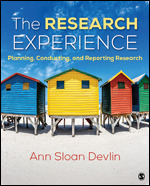Tips about Amazon Mechanical Turk
AMT offers internal templates within which to create simple HITs. If you want to conduct more complicated research using a between subjects design and random assignment to condition, your best approach is to create your survey in Qualtrics or SurveyMonkey and embed your survey link in the HIT (see Chapter 5 for coverage of online survey software).
Most of the Workers come from the US and India. There are more complicated ways to acquire participants with particular characteristics, but in the simplest approach you can set Qualifications within your HIT that specify country of location and the percentage of HIT approvals Workers must have.
Workers are evaluated in terms of whether they finish the HIT or not and whether you approve their work. You can therefore specify that workers for your study have a particular level of HIT approval rating, such as 95%.
What you pay Workers is a moving target, but you are unlikely to get people to accept your HIT for a study lasting more than 10 minutes if you offer less than $.0.50 (and that amount is steadily creeping upward). In research about the characteristics of MTurkers, Workers now report that they are attracted to MTurk to earn money.
If Workers do not like your HIT (e.g., think it took longer than you said it would), they may post negative comments about you on MTurk list serves or forums. If you are thin-skinned, this form of data collection may not be for you.
You will have to provide your social security number to be a Requester or a Worker (this presumably has to do with issues related to income earned and/or money paid).
Amazon charges a commission fee.[/su_box]

This material is drawn from the SAGE Publishing text The Research Experience: Planning, Conducting, and Reporting Research by Ann Sloan Devlin at Connecticut College.
The Research Experience: Planning, Conducting, and Reporting Research presents a process-oriented approach to research for students in the behavioral sciences. In-depth, practical advice for conducting each step of the research process includes coverage of the most common research methods and current technologies—including Qualtrics, Google Scholar, and Amazon Mechanical Turk—as well as techniques for finding participants and collecting data in a variety of settings. With robust pedagogy and six helpful appendices, this text will further readers’ ability to produce well-executed projects and critically evaluate information in both their personal and professional lives.[/su_box]

